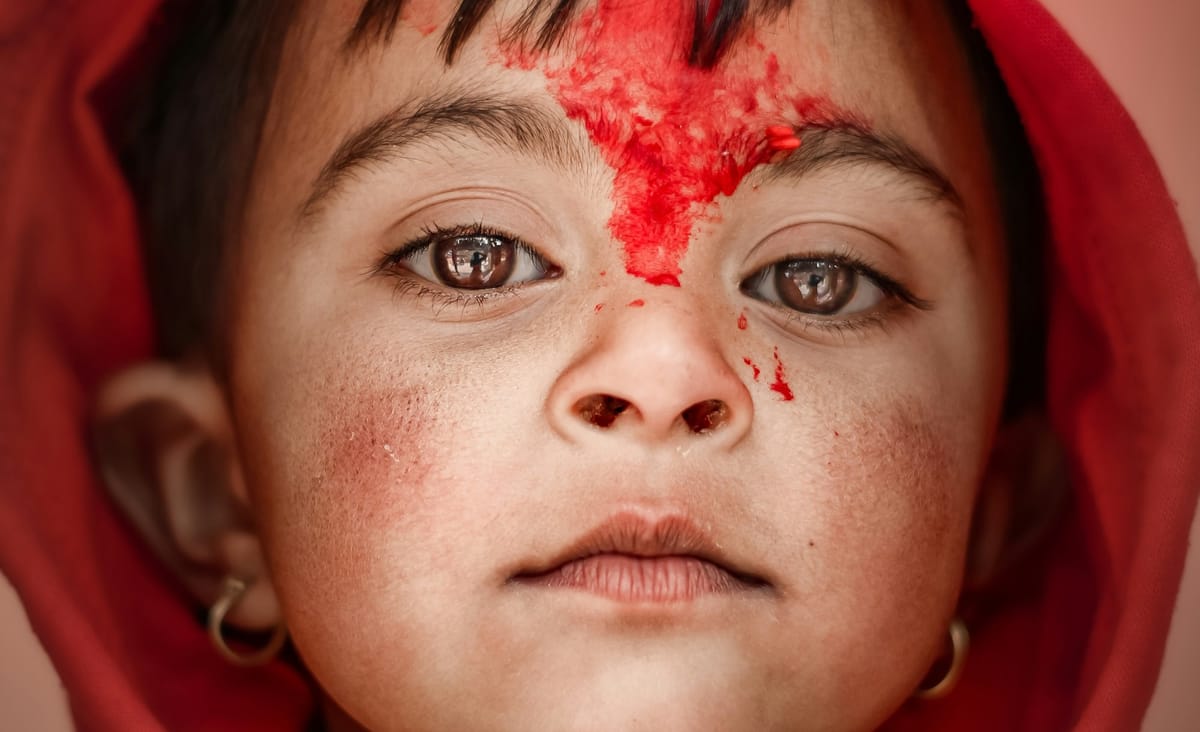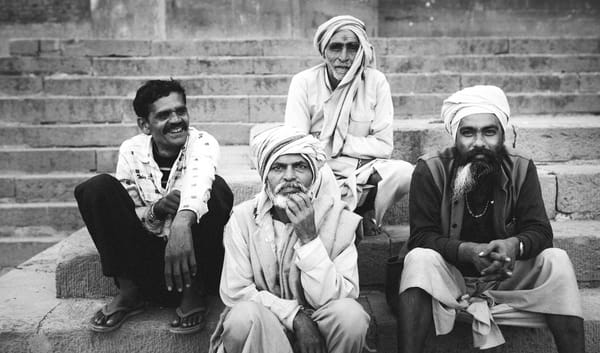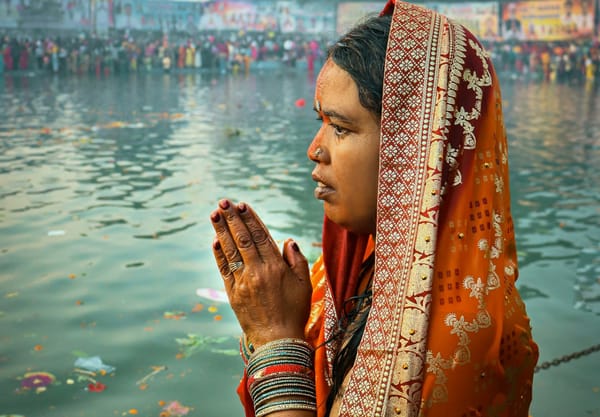The Night We Lost Kashmir

This is a story of one of the many betrayals that our community i.e. the Kashmiri Hindus faced. The story of how Farooq Abdullah, the then Chief Minister of Jammu & Kashmir, watched silently, enabled the exodus of Kashmiri Hindus as we were driven out of our homes, and walked away unscathed.
His tenure was a period of political missteps, inaction, and complicity that enabled this ethnic cleansing. Abdullah was never charged, never held accountable. But his governance or rather lack of it— created conditions for terror to flourish, leaving scars that endure 35 years later.
1986: The Prelude
People often think it all began in 1990. It didn’t. The warning signs were there much earlier.
In 1986, tensions were already running high. It started with the decision to build a mosque on the site of an ancient Hindu temple near the Civil Secretariat in Jammu.
This decision was not from Farooq Abdullah, it was taken during the tenure of Abdullah’s predecessor, Ghulam Mohammad Shah. But Abdullah’s government didn’t do much to ease the situation either.
Things only got worse as the Valley began to simmer under Abdullah’s National Conference-Congress alliance government. Riots erupted in Anantnag, which was Congress’ Mufti Mohammad Sayeed’s constituency. Scores of Hindu homes were attacked, shops looted, and temples were desecrated and destroyed in areas like Vanpoh, Anantnag and Sopore. No major arrests were made, no one was punished.
The silence from the state was deafening. This should ideally have triggered an emergency action, but it seemed more like they chose to look away. We thought this would be a wake-up call. It wasn’t. For us Kashmiri Hindus, it was the beginning of the end.
1987: The Rigged Elections
The Jammu & Kashmir Assembly elections of 1987 were a turning point. Though the elections did not start the fire, they poured fuel on it. The Valley was already simmering by then, and some Kashmiri youth had begun turning towards the separatist and militant ideologies.
The elections, widely seen as rigged, became a breaking point. The ruling National Conference led by Abdullah along with Congress, faced off against the newly formed Muslim United Front (MUF). The opposition candidates were arrested, ballot boxes stuffed, and votes tampered with. Many candidates who lost that election like Yusuf Shah (who later became the Hizbul Mujahideen chief Syed Salahuddin) turned to violence.
Others joined the Jammu and Kashmir Liberation Front (JKLF) or crossed into pakistan. When Hizbul Mujahideen was founded in 1989, it came with ISI backing and a clear jihadist agenda. The Abdullah government could have tried to calm things down. It did nothing to address this growing unrest or restore faith in the state. No accountability.
Terror didn’t just sneak into Kashmir. The vacuum of governance and justice gave space for terrorism to grow. Betrayal doesn’t always happen through action. It also happens through what isn’t done.
1989: The Beginning Of The Killings
By 1989, things had spiraled with terror at the doorstep of Kashmiri Hindus. The JKLF and Hizbul Mujahideen began a campaign of targeted assassinations. The first time we really understood what was coming was when Tika Lal Taploo, a prominent Kashmiri Hindu and BJP leader, was shot dead in broad daylight. No arrest.
Soon after, Justice Neelkanth Ganjoo, a retired judge who had sentenced JKLF founder Maqbool Bhat to death, was shot dead outside the Srinagar High Court. Then came Prem Nath Bhat, a lawyer and journalist, killed in Anantnag.
Hit lists with Hindu names were being passed around. The targets were specific - Hindus in visible positions of influence. What did the government do? Nothing. No serious crackdown, no security overhaul.
Known killers like Javed Ahmed Mir ‘Nalka’, linked to Taploo’s killing, roamed freely. Raj Bhavan and the Secretariat seemed paralyzed and lack of action or any hard steps felt like tacit consent from the Abdullah government.
1990: That Dreadful Night Changed Everything
The crisis reached its peak in January 1990. Local newspapers like Aftab and Al Safa published threats from Hizbul Mujahideen, demanding Kashmiri Hindus leave the Valley or face death.
The night of January 19, 1990, was one of the most terrorizing nights of our lives. If you were a Kashmiri Hindu living in the Valley that night, you’ll know exactly what I mean. There was a total blackout across the Valley except for the mosques.
All their loudspeakers blared warnings such as *“Raliv, tchaliv, ya ghaliv”, “asi gatchhi pakistan, batav rotchh ta batnyav saan”.* And so many more. Houses were marked, hit lists spread, leaflets calling for ethnic cleansing. The Kashmiri Hindu community was no longer welcome in their own homeland.
By January 20, 1990, Kashmiri Hindus began fleeing the Valley. I was terrified. We all were. People started packing whatever they could carry, clothes, documents, medicines, and prepared to leave everything else behind.
And where was our Chief Minister? Farooq Abdullah had abruptly resigned a day earlier on January 18, 1990. He said it was because Jagmohan was appointed as Governor, but we all knew better. His resignation was nothing but abdication of his duties in the face of genocide. It was an escape - while Kashmir burned, he flew off to London, far away from the land he had sworn to serve.
There was a second wave in March and April when killings got even more brutal. One of the worst was Girija Tickoo. She was a lab assistant. She was gang-raped and then brutally killed, cut in half with a saw while she was still alive. She had returned briefly to collect her salary only to never return again.
Over 300,000 of us fled between 1990 and 1992. More than 200 Hindu temples were destroyed or desecrated, erasing centuries of cultural heritage. And till date, no government has really tried to rebuild what was lost.
The Legacy of Loss
These numbers are not just statistics. These are people we knew, families we grew up with, homes we left behind.
* 300,000+ Kashmiri Hindus forced to flee
* 70,000+ families officially registered as migrants
* 4,000+ migrants only in Jammu’s migrant colonies
* 1,500+ killed brutally in targeted attacks
* 200+ uninvestigated or prematurely closed FIRs
* 200+ temples desecrated
* 0 convictions
* 0 reparations
* 0 justice
Farooq Abdullah returned to power - again, and again. The Kashmiri Hindus? Most of us still live in exile, in Delhi’s migrant colonies, in Jammu’s migrant camps, and now across the world, waiting for justice that remains elusive.
Call it what you want. Ethnic cleansing. Genocide. Forced exile. For us, it was the day our world ended.
It's been 35+ years with multiple governments having come and gone. The Kashmiri Hindu genocide remains an open festering wound. Memorials proposed and forgotten, committees have come and gone. Even today, the courts have dismissed our pleas. No SIT, no war crimes tribunal. And the man under whose watch it all began? Still treated like a statesman. Still on TV panels, giving interviews. He once said, “Jo hua, so hua”. That one sentence says it all.
Some things fade, some things scar. This one never healed and never will.





